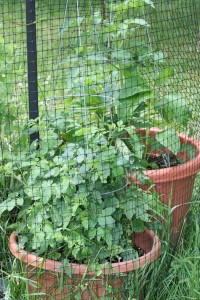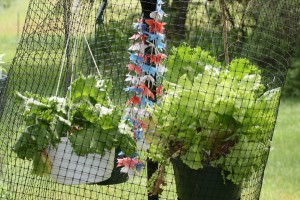
(Chelsea Update would like to thank Jennifer Fairfield of The Garden Mill for the information in this column. Part two will run tomorrow)
In the vegetable garden
It’s the time that many things begin to be harvested and in the perennial garden, it’s a time when lots of flowers are in bloom (my Echinacea is just starting to put on a show, and my bee balm is about to burst – the butterflies and bees are going to have a field day).
All our hard work is starting to really pay off this month. But there’s still more to be done.
July should be harvest time for many crops. Spring crops, such as lettuce, spinach, and peas will mostly finish producing this month, while summer crops, such as zucchini, cucumbers, and early tomatoes will just be getting started by the end of the month.
This month is also a time for planting and starting new seedlings for fall harvest. If you want to have broccoli and cabbage for fall, start your own inside by no later than July 10, transplanting the seedlings into your garden when they are four to six weeks old. They should be ready for harvest by early October. These can be good “succession crops” to be put into the garden in place of things like onions and garlic, once those have been harvested.
You can plant late season successions of lettuce, spinach, peas, beets, carrots, and Swiss chard at the end of the month, to be ready for picking before it gets too cold. But wait to plant radishes until early or mid-August, as it will generally still be too hot at this point for these cool-weather lovers (they mature very quickly, and will bolt in the heat of August before they can get big enough for eating).
Don’t forget to water your veggie garden regularly. Your plants generally need about an inch of water every week, and we certainly are not getting that. A good soaking once a week is better than a little bit every day or two, but when the temps are as high as they were last week, accompanied by wind, a little more water is even better.
Don’t overdo it, but definitely make sure that your soil doesn’t totally dry out between watering. That’s a great way to stress your plants.
Side dress your summer crops this month. Side dressing is just the simple act of giving your plants a mid-season boost of fertilizer. It provides the plants with a little extra food when they need it most – as they are doing the most growing and as they are producing flowers and fruit.
By the time they are ready to start putting out flowers, the plants have used up most of the available nutrition in your garden. Providing a little more fertilizer at this point will make a big difference in whether your garden produces in abundance, which is the point of all this work, isn’t it?
The term side-dressing really just means to apply fertilizer around the plant, in the root zone. Don’t just sprinkle it on top, though – carefully work it into the top inch or so of soil. Fertilizer left on top of the soil often will just wash away before it can break down and be useful to the plant.
Don’t get any closer than about four inches from the stem of the plant, as you want the food to be available to the new root growth as the plant is growing and putting out more roots.

Weed. And weed some more. And keep weeding. Weeds compete for water, food, and sunlight with the plants you are working so hard to grow. Don’t let them. If you just do a little bit of regular weeding, you can stay on top of it, and pulling small weeds that don’t have very established roots is a lot easier than pulling bigger ones that have had lots of time to get comfy where they are.
Keep an eye out for insects now, too. I’m seeing cabbage worms on my broccoli, cabbage, and kale. Slugs are apparently taking advantage of the mulch under my plants to hide from the heat of the sun, and then coming out at night to dine on the plants.
For the cabbage worms, I’m just picking them off and squishing them. The slugs have gotten a treatment of Espoma’s “Bug and Slug” that we carry at the store. It has definitely slowed them down.
Keep up with your program of fungicide spraying. There are a lot of diseases that really get going as summer progresses, especially on tomatoes, cucumbers, and squash. Treating your plants with a fungicide on a regular basis can help keep them from succumbing to disease, which means that you might actually get to eat a lot of what you planted.
If you’re not sure how to tell what’s ailing your plants, Cornell University’s Vegetable MD Online is a great resource.
Oh, and don’t forget to water.














